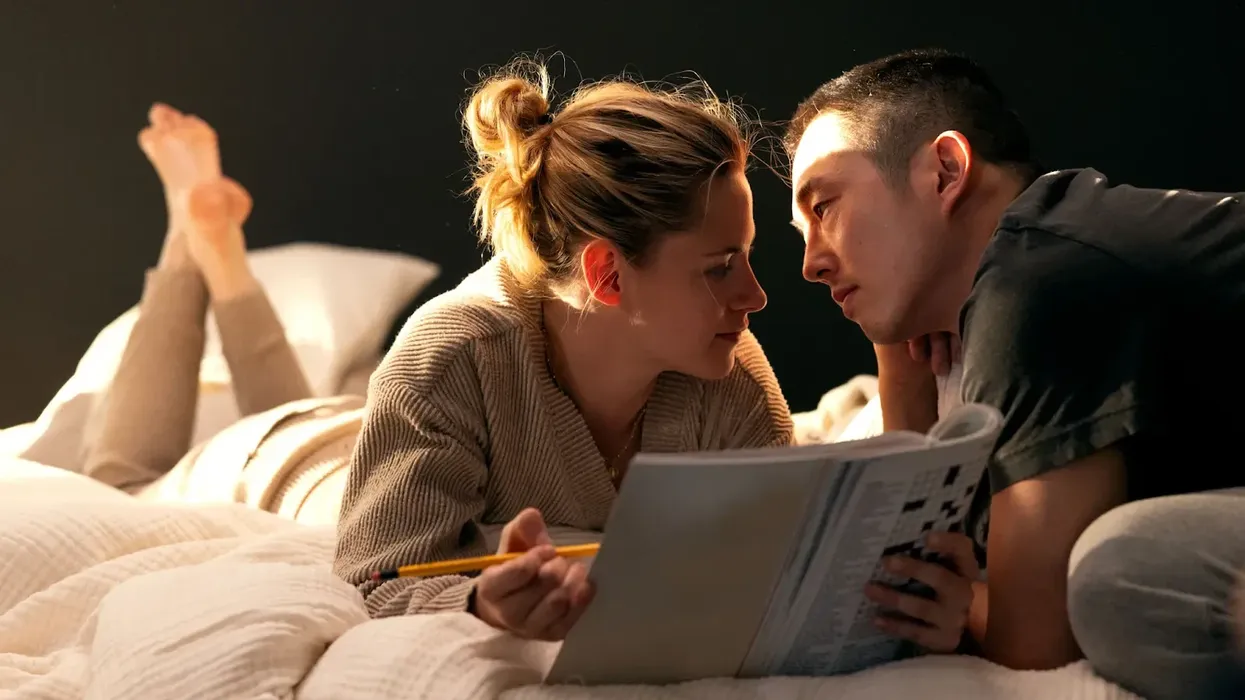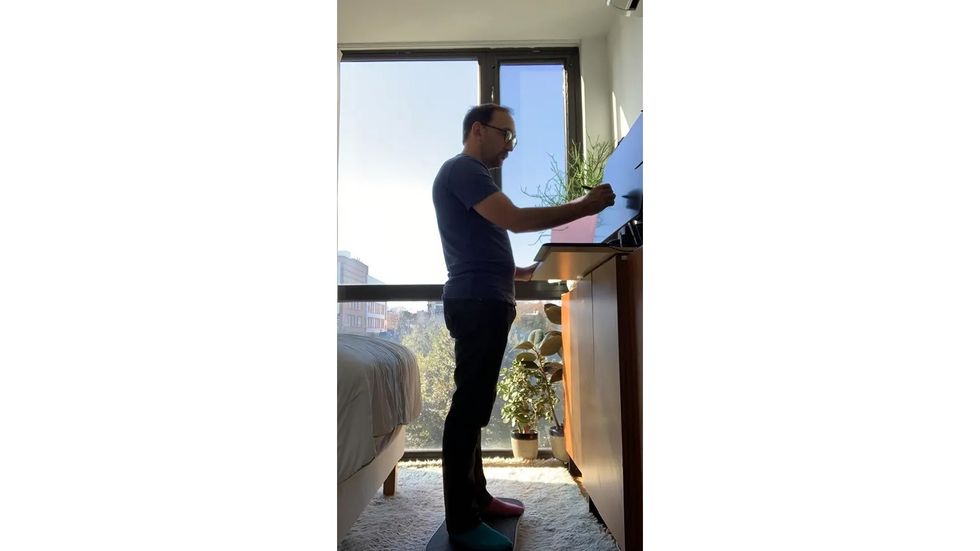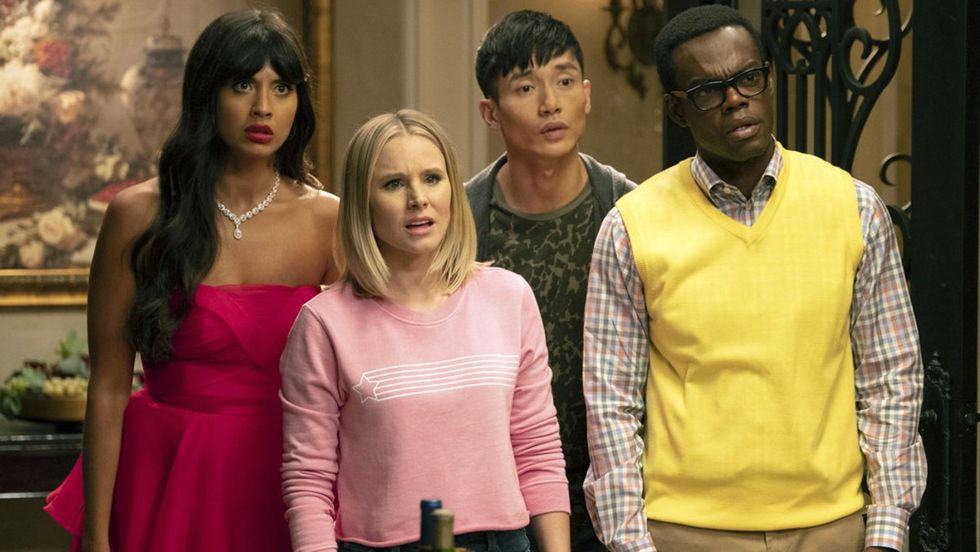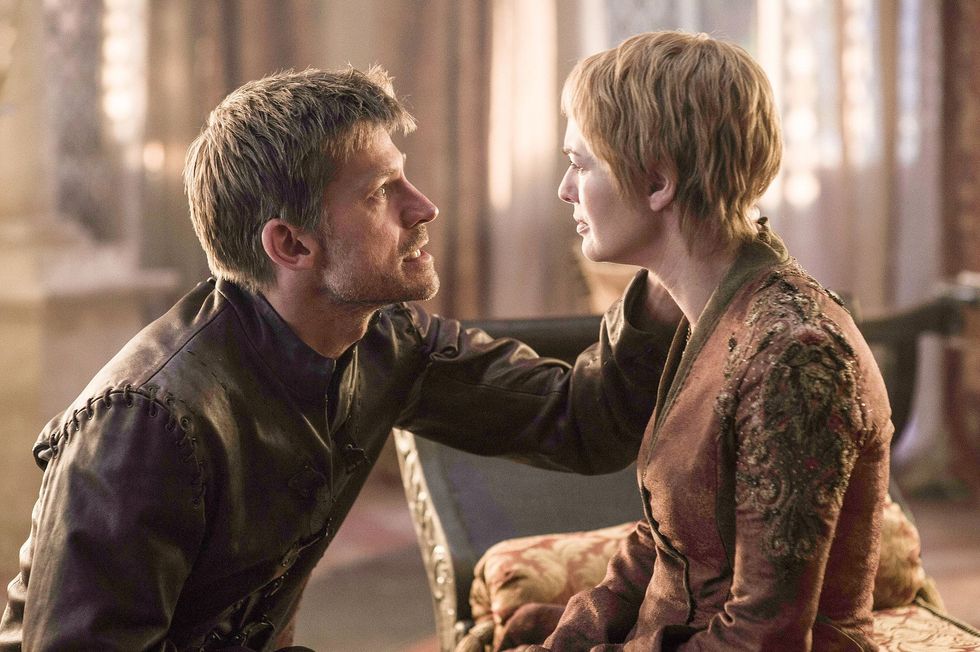Behind the scenes of Sundance film “Love Me” using Adobe Creative Cloud
“Love Me”, starring Kristen Stewart and Steven Yeun, unfolds the unique billion-year love story between a smart buoy and a satellite.

This post was written by Meagan Keane and originally appeared on the Adobe Blog on January 19th, 2024.
This film intertwines the real, the virtual, and the surreal realms, as the two awkwardly navigate romance and companionship, equipped only with vast archives of web data, social media, and online videos.
Directors Sam and Andy Zuchero brought on editor Joseph Krings, ACE after the edit was already underway to help them refine and hone the complicated story as they began showing it to preview audiences for the first time. While Sam and Andy were actively engaged in the editing process and relied on Adobe After Effects and Adobe Photoshop for the advanced temp VFX work, Joseph used Adobe Premiere Pro for its user-friendly interface, allowing for multiple open timelines. The efficiency of keyboard shortcuts in Premiere Pro also streamlined the process and saved valuable time throughout.
“Love Me” premiered at Sundance Film Festival on January 19. Read on below for a behind-the-scenes look into the film with Joseph Krings.
How and where did you first learn to edit?
I first learned in high school in the early ‘90s on some sort of Grass Valley type of tape-to-tape machine, then further in college still doing tape to tape editing. If I had never learned another way, I would have never been an editor because that process is nothing but pure pain. Luckily just as I was graduating college, we got our first non-linear editing system. I then got a job making local TV commercials and news promos in Lincoln, Nebraska and that is when I really learned to edit and discovered it was what I wanted to do with my career.
How do you begin a project/set up your workspace?
I have a very elaborate setup for every project. Each scene has a bin for the footage and each scene has a bin for cuts of just that scene. I have a customized keyboard that has been honed and refined to my liking for over 20 years. But that is when I am using that other software. I joined “Love Me" as it was already well in progress and had been set up in Premiere Pro, so I did not have my usual creature comforts. I truly enjoyed the challenge as it required me to think in different ways and patterns than I am used to. I also had to reinvent my keyboard from scratch again but was happy to find I had so many more keys to re-program!
Tell us about a favorite scene or moment from this project and why it stands out to you.
Spoiler alert! For me, it is the moment when Me first walks back into the apartment, and she is now a fully formed human presence as we would recognize it. I like it for her awe in taking in this space that has changed for her in ways we can’t even begin to imagine. Everything she had known as animated has now become tactile and real. But I also like it because her awe and wonder is complicated by the mood of Iam who, while proud he has created this place, is also too proud to just let this ex-partner just waltz back into his life so simply. This and the following moment where Me sees herself in the mirror for the first time and Iam shows off how they now have real water is just an exquisite dance between these two people in what is a very complex but also very recognizable and relatable relationship. As an editor it is also the first time we get to see real humans on screen in the whole film and so it was a more comforting form to work in.
What were some specific post-production challenges you faced that were unique to your project? How did you go about solving them?
Clearly the most specific post-production challenge to this project was the fact that the entire middle of the film is created with motion capture animation. This meant we had real Kristen Stewart and real Steven Yeun running around on a real set but wearing those weird looking motion capture suits collecting data so these very real actors could then be turned into animated versions of themselves. The directors shot this footage pretty close to how they would like the shots to look once they were animated so we were able to cut it almost traditionally, but we always had the option to do something different than what was shot, which requires another level of imagination. We knew we could just steal bits and pieces from many different takes and splice them together seamlessly in animation, so we were constantly making a new shot out of the pieces of multiple shots. It would make what looked like a Frankenstein of a shot, but we knew it would look like a “normal” shot once animated. We also were in no way limited to the dialogue they said on set so this section of the film could be endlessly re-written and it was with the directors voicing for the characters. And unlike real ADR we didn’t have to hide it. We knew we could animate the face doing it. The solution was to shed the idea of limitation and know we could do almost anything so long as it was right for the overall story and concept.
The second level challenge of this was trying to show it to audiences to see if the story was working and helping them understand that this crazy stitched together picture of famous people in funny suits would actually look like animation and get them to focus on the basics of whether the story was working. Sam & Andy made a fun little intro video we could show at screenings explaining what people were about to watch and it seemed to do the trick!
What Adobe tools did you use on this project and why did you originally choose them? Why were they the best choice for this project?
We used Premiere Pro, After Effects and Photoshop. I primarily only trafficked in the edit in Premiere Pro myself, but Andy, one of the directors and a very good editor himself, and the assistant editor Nathan Allen, were constantly creating some complex temporary visual fx using the other tools. Because this film required so much advance temp VFX work that could be best done with Photoshop and After Effects, it only made sense to stay in an all Adobe environment.
We also used Frame.io to post work in progress cuts for other team members.
What do you like about Premiere Pro, and/or any of the other tools you used?
There were certain aspects of Premiere Pro I came to really like that were interface based such as being able to have multiple timelines open at the same time in a “pancake” view, while one is loaded in the source monitor and the other in the record. I also really love being able to add keyboard shortcuts to all of the various modifier keys which makes for a lot of speed. The simplicity of copy and paste for media and easy muting and unmuting were other small pleasures.
Who is your creative inspiration and why?
Today it is Hal Ashby, an editor who became a director, a couple of months ago it was Dennis Hopper. I like iconoclasts who seemingly come from nowheresville but are determined to do things their way and not follow accepted norms to get where they feel they need to go. In the end they made genuine pieces of film art that could not have come from anyone else. As a guy from a small farm town in Nebraska that really speaks to me, though whatever I do I hope to do a lot less damage to other people’s lives and my own than those two did.
What’s the toughest thing you’ve had to face in your career and how did you overcome it? What advice do you have for aspiring filmmakers or content creators?
When I was editing “Captain Fantastic” there came a time in the film’s cut when some people thought the film needed a new, more experienced editor to do a pass on the film. This is an all too common occurrence in all levels of filmmaking. The director was dead set against it and lobbied very hard to keep me on and in charge despite this being my first film with more than a micro-budget. Luckily for me, one of the big name editors they contacted to take over is also someone I consider a friend. He proposed I stay on as the editor and he “consult” over a long weekend of work together with me and the director. In the end everyone was very happy. Unfortunately, the idea that you can just replace the editor and get better results is one that is becoming more and more common and leading to some unhealthy practices impacting not only the quality of the films but people’s careers. I am working behind the scenes with colleagues discussing ways we can work to change the culture around the concept of “fresh eyes.”
Share a photo of where you work. What’s your favorite thing about your workspace and why?
So, on this project I worked from home. Let me be clear, I do not like working from home, because in my small Brooklyn apartment you can see I have all of the equipment, not on a proper desk but on credenzas that sit at the foot of my bed. However, when I work from home, I do have a lot of sunlight and a cat to keep me company. My favorite thing about my workspace no matter where I go is my Wacom Cintiq Pro monitor that allows me to use the main edit monitor like a giant tablet where I can work right on the screen. I combine that with a typical Wacom Intuos so I always have a pen in my hand and never, ever touch a mouse. I’m also quite fond of my standing desk boogie board which keeps me working my core all day long!

This post was written by Meagan Keane and originally appeared on the Adobe Blog on January 19th, 2024.
- Does Adobe's Winter Update Make the Subscription Worth the Cost? ›
- Adobe Speeds Up Export Times in New Creative Cloud Update ›
- ‘Sam Now’: Award-Winning Documentary Made With Adobe Creative Cloud Explores the Impacts of Childhood Trauma ›
- The Editing Behind “Will & Harper” Using Premiere Pro and Frame.io ›















